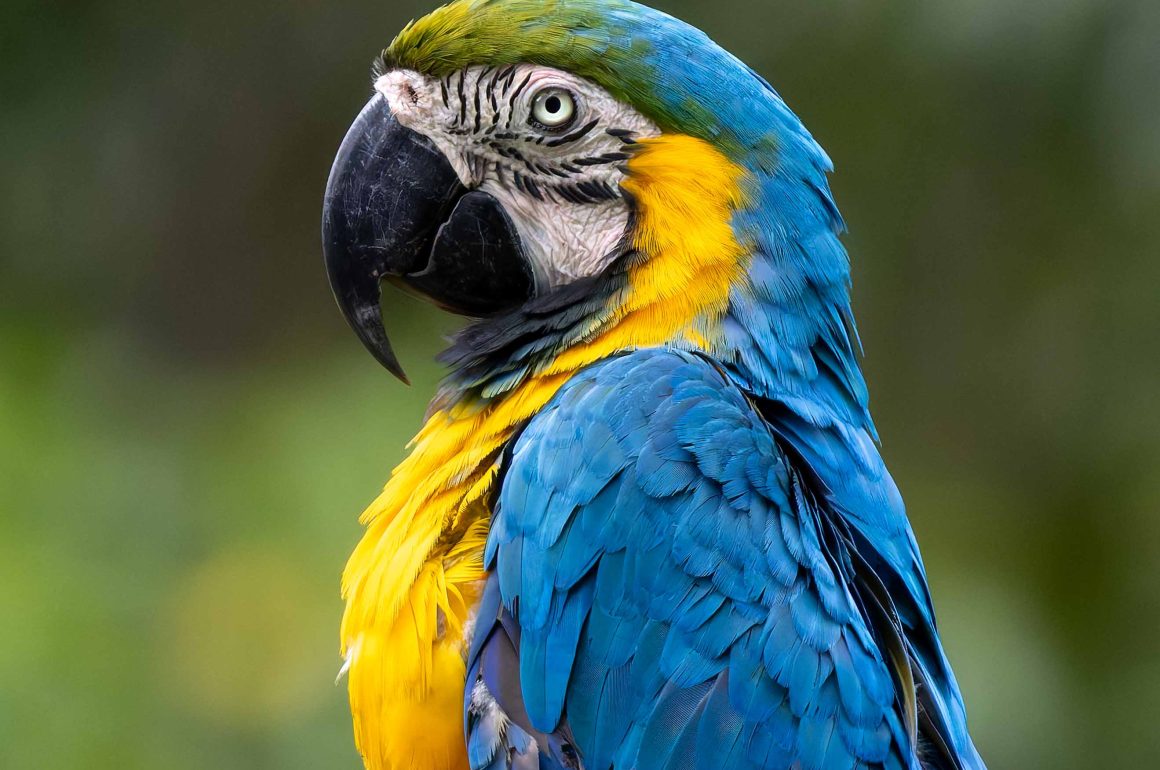
The Pointe-a-Pierre Wildfowl Trust in Trinidad is located inside an oil refinery compound, this may sounds strange at first, but once you are inside, it’s like stepping into a quiet, green world with trees, birds, and water. You almost forget the industrial site is right next door. (NB: as of 2018 the refinery was shutdown)
The Wildfowl Trust was started in 1966. Its goal includes, to protect local wildlife, especially birds, and to teach people about the environment. Over the years, it has become an important place for conservation in Trinidad and Tobago as well as a regular spot for birdwatching. A few bird species have been bred at the Trust and released into the wild. The Blue and Yellow Macaw (Ara ararauna), seen in the feature image of this post is one such species that have been successfully bred in captivity and released into the wild.
During my visit, the main pond near the Visitors Centre was alive with waterfowl and other birds. Although I limited my short visit to this pond and the immediate Visitors Centre area, there was still plenty to see and photograph. The birds may not have been rare, but the sheer numbers, especially the many juveniles, clearly showed how well this area supports breeding populations.
In this month’s post I will share with you some of the birds seen at the Trust as well as a few tit-bits about the Trust itself.
The Black Belly Whistling Ducks (Dendrocygna autumnalis), were probably the largest group of wildfowl at the Trust, and during my visit, they seemed to be everywhere. This species was part of the captive-breeding and release program at the Trust.
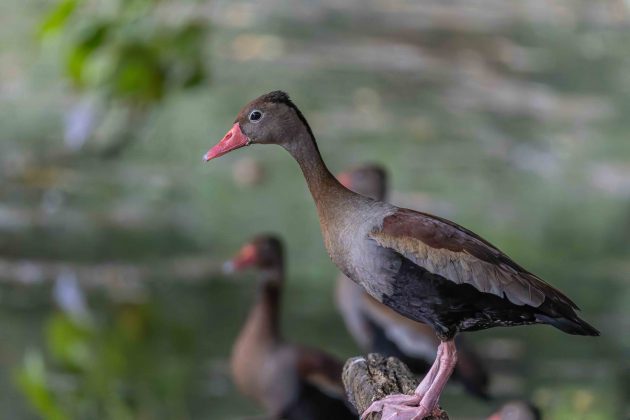
The Purple Gallinule (Porphyrio martinicus), is another regular at the Trust, easily recognized by those almost cartoonishly big yellow feet that let it tiptoe across lily pads like it’s walking on water.
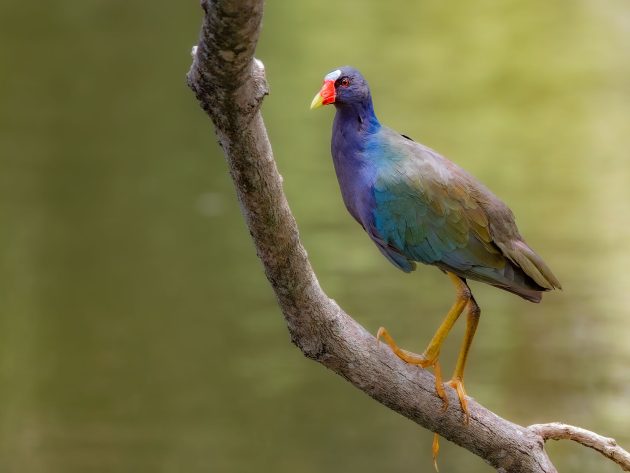
A few Common Gallinule (Gallinula galeata), swam around the pond feeding. The Common Gallinule and the Purple Gallinule may share similar wetland habitats, but they look and behave quite differently. The Common Gallinule has a dark gray body with a red bill and white side stripes, and it’s often seen swimming in open water. In contrast, the Purple Gallinule is strikingly colorful with a bright purple-blue body, greenish wings, a red-and-yellow bill, and long yellow legs. Its oversized toes let it walk across lily pads with ease, making it more of a plant-walker than a swimmer.
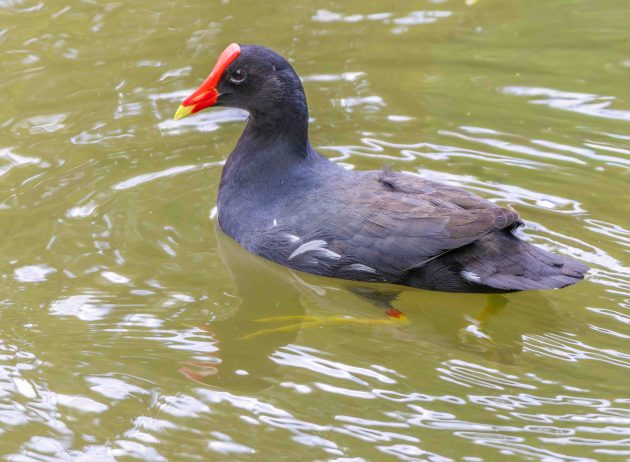
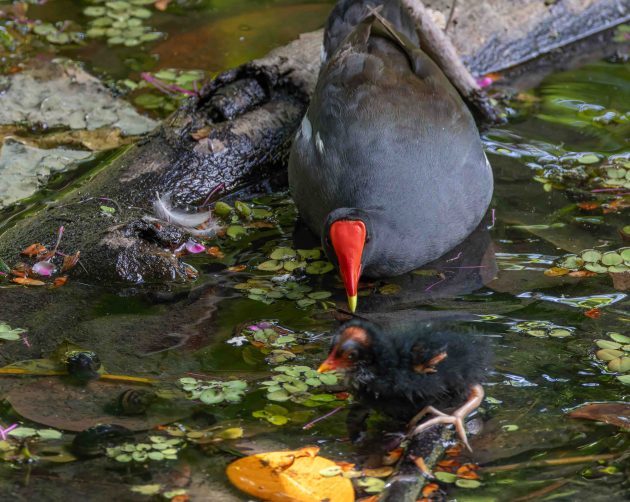
Wattled Jacanas (Jacana jacana) adults and youngsters alike, strutted confidently across the floating lilies as if they owned the place, pausing now and then to forage along the pond’s edges.
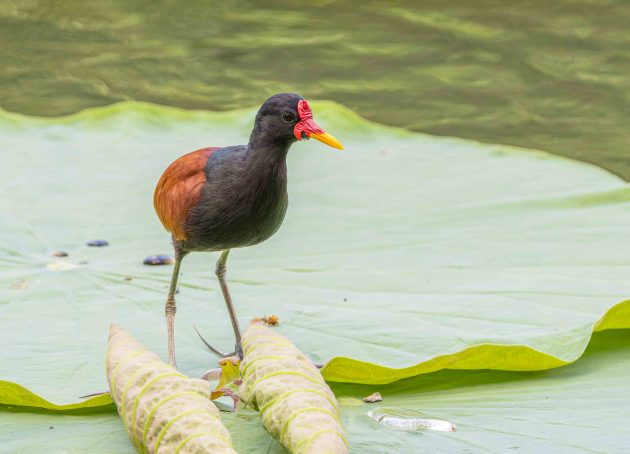
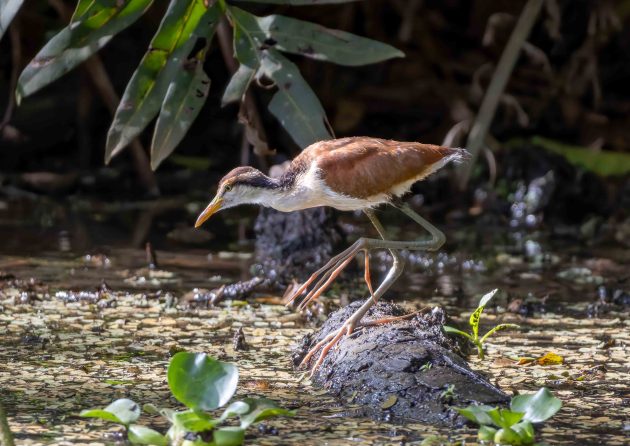
Moskovy Ducks (Cairina moschata) swam around at the far end of the pond. Moskovy Ducks are a large duck species native to Central and South America but now found in many parts of the world, including Trinidad. They are easily recognised by their red facial skin and quiet, hissing sounds (they don’t quack like most ducks).
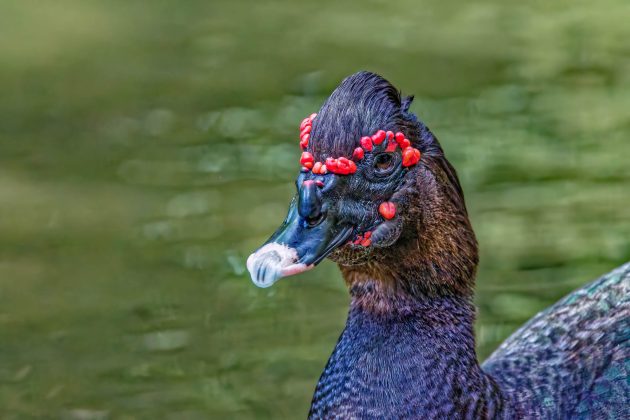
Neotropic Cormorants (Nannopterum brasilianum) treated the pond as both home and buffet, diving after fish and then perching nearby to dry their wings.
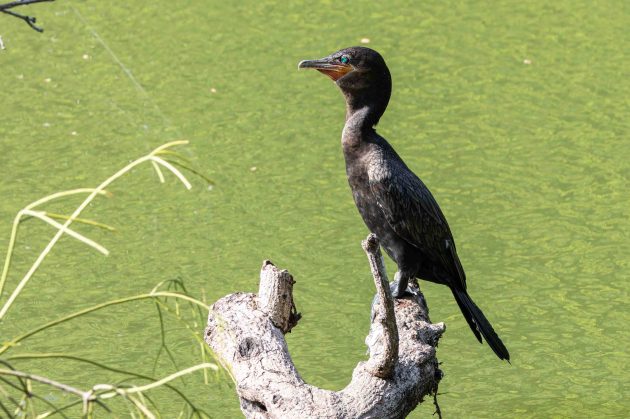
The Anhinga (Anhinga anhinga), or sometimes called the Snake Bird, was a welcome sight, both in the water and perched, drying itself off.

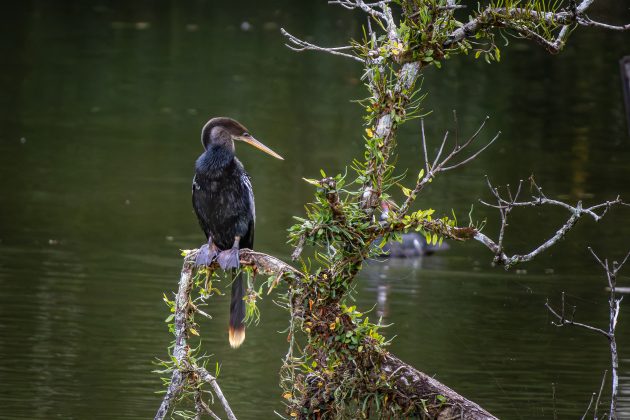
The Cocoi Heron (Ardea cocoi), the largest heron species in South America are regularly seen around Trinidad’s wetlands, mangroves, and coastal areas. While they’re more widespread on the mainland, in Trinidad they are present year-round, though not necessarily in large numbers.
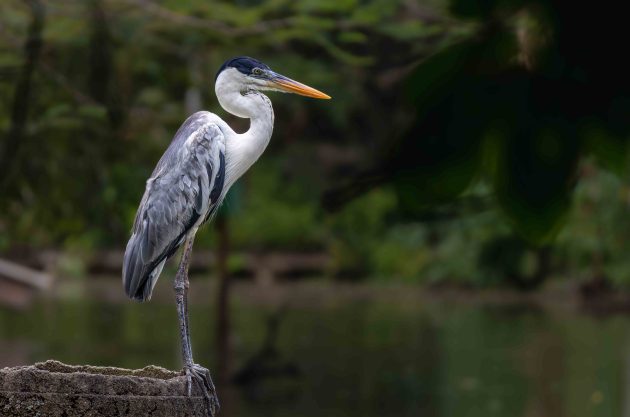
The Striated Heron (Butorides striata). This small heron is one of the few bird species known to use tools. They have been observed dropping insects, feathers, or even bits of bread on the water’s surface to lure fish within striking distance. Once the fish comes up to investigate, the heron quickly snatches it.
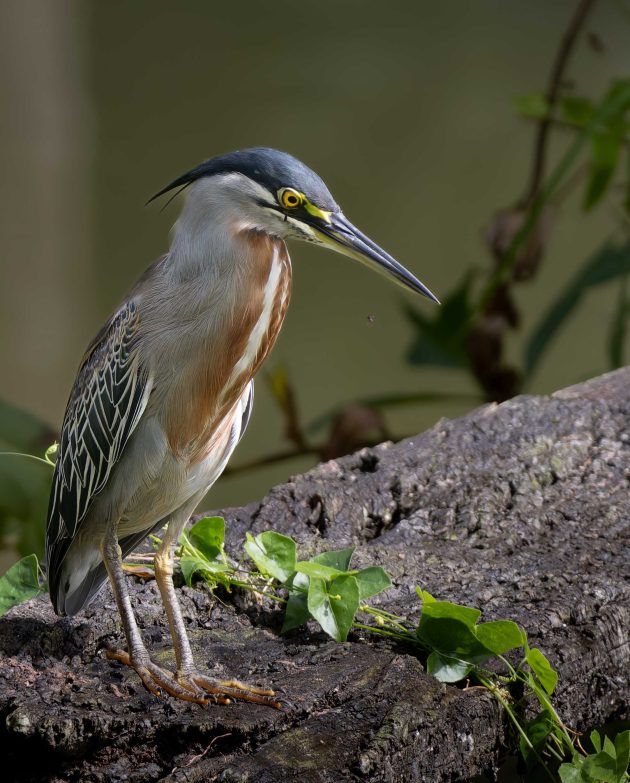
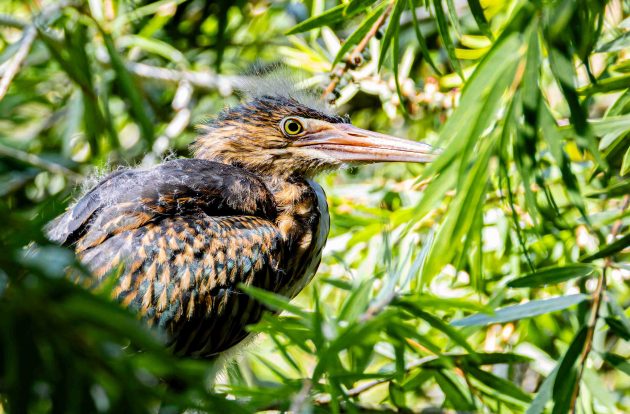
Juvenile Little Blue Heron (Egretta caerulea). Unlike the adults, which are a striking slate-blue, the young birds are pure white and often mix in with Snowy Egrets for safety before gradually molting into their adult plumage. On this visit, I only came across the juveniles, no adults in sight.
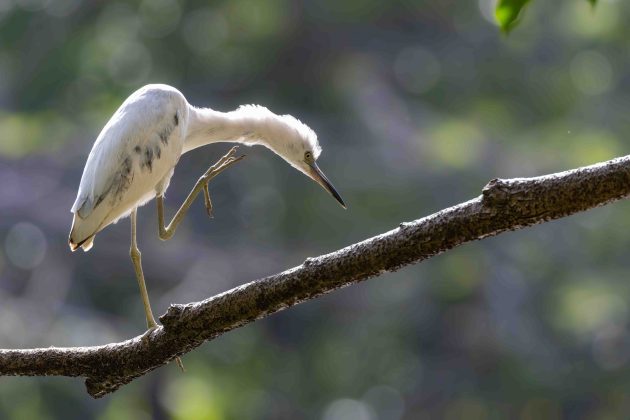
A short distance from the pond, a Ringed Kingfisher (Megaceryle torquata) had taken up a perch, surveying everything below with its usual commanding stare.
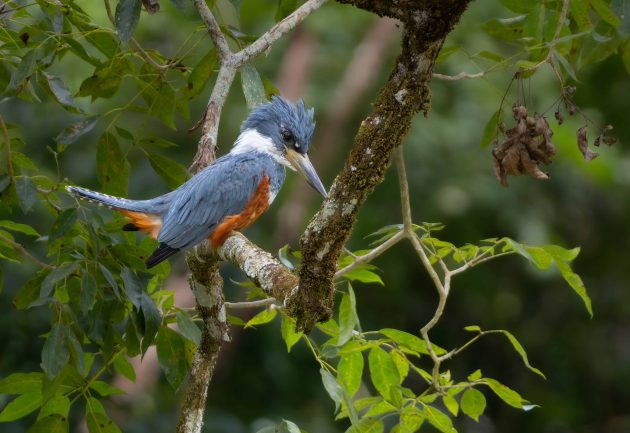
Yellow-hooded Blackbirds (Chrysomus icterocephalus), are widespread in Trinidad, and the Trust had its fair share of them around the ponds and reed beds. Here we have a male doing a display to attract a mate.
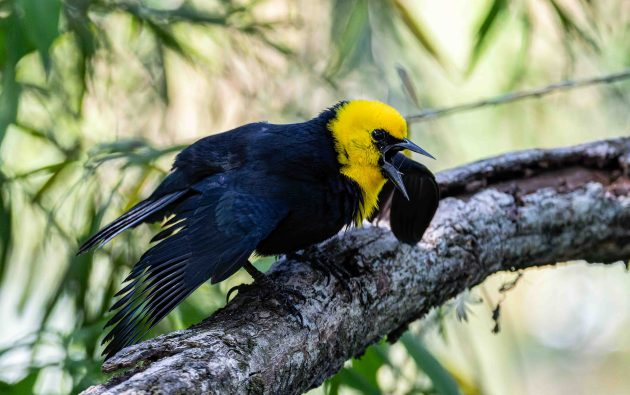
The Yellow Oriole (Icterus nigrogularis) is one of the brightest and most cheerful songbirds you’ll meet in Trinidad, practically a flying burst of sunshine.

The Ochre-lored Flatbill (Tolmomyias flaviventris) isn’t the flashiest bird at the Trust, but its loud, insistent call often gives it away long before you glimpse its yellow belly in the leaves.
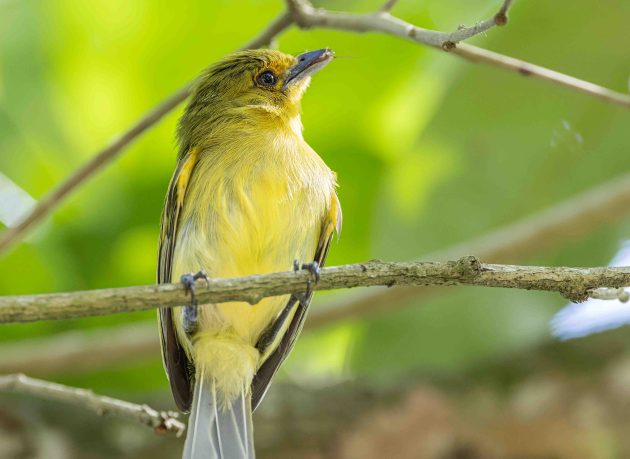
The Masked Cardinal (Paroaria nigrogenis) is one of Trinidad’s most striking little songbirds, and one that always catches the eye at the Wildfowl Trust.

Scarlet Ibises (Eudocimus ruber) filled one of the enclosures, with adults and juveniles mingling as some cared for nests. They are part of the Trust’s breeding and release program
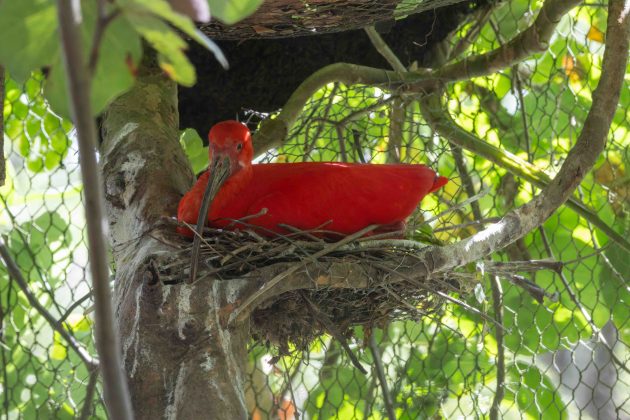
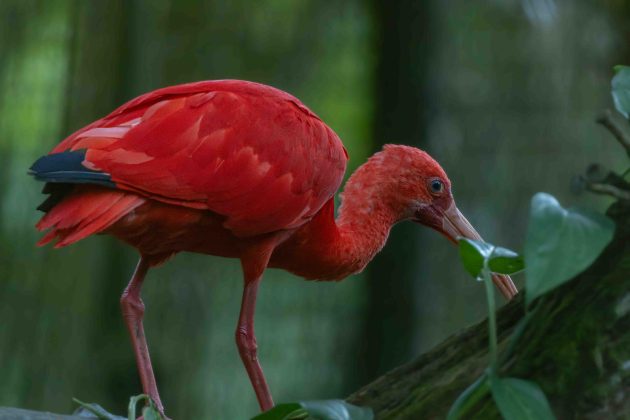
The Peacock (Pavo cristatus) isn’t native to Trinidad, but at the Trust their spectacular plumage and courtship displays remain a favourite attraction for visitors.

The Trust is more than just a place to watch birds, it’s an active conservation centre. Here, birds are bred and released, and schools are welcomed for environmental education programs. For many of the children who visit, it may be the very first time they’ve seen these birds up close.
Blue-and-yellow Macaw (Ara ararauna), once almost lost, they were successfully bred in captivity and reintroduced to the Nariva Swamp, thanks in large part to the Wildfowl Trust’s efforts.
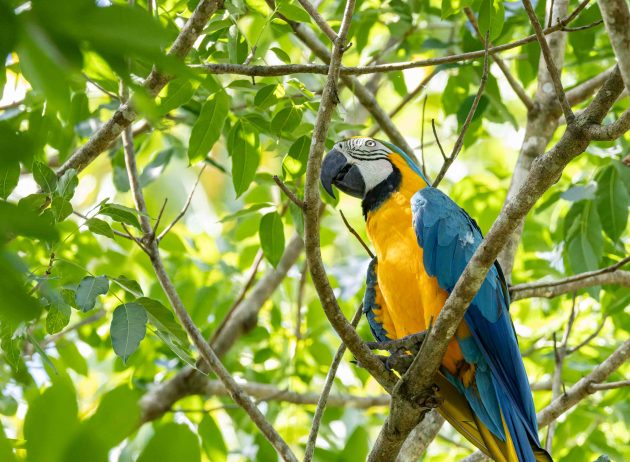
The birds may have stolen the spotlight, but the turtles refused to be upstaged, forming what could only be described as a conga line, if conga lines moved at the speed of drying paint and had absolutely no sense of rhythm. These slow-motion performers were Red-eared Sliders (Trachemys scripta elegans), a freshwater turtle species that doesn’t even belong in Trinidad. Originally introduced through the pet trade, they’ve since made themselves quite at home in ponds and wetlands, including those at the Wildfowl Trust, where, apparently, they’ve decided to take up synchronized marching as a side gig

By the end of my visit, I left the Trust feeling inspired. This isn’t just a place for birdwatching or a family outing, it’s a conservation landmark, shaping how people, especially children, see the natural world. With its 60th anniversary on the horizon in 2026, the Trust’s staying power is proof that its mission is as strong as ever.






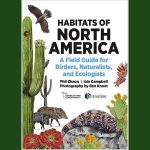



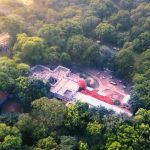
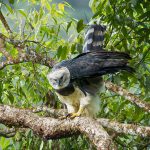
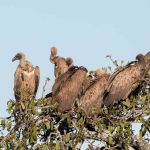
Great piece on one of my favourite places since childhood, Fitzroy!
Thanks Faraaz. I totally get why you love it too. Such a relaxing place to visit.